Today we have the launch of the AMD Radeon Pro W7900 and W7800 parts. These are the newest professional GPUs from AMD. What is interesting is that AMD’s messaging seems to follow what it did in its AMD RDNA 3 Radeon RX 7900 XTX 24GB and RX 7900 XT 20GB Launch which makes a lot of sense given the similarities of AMD’s GPUs.
AMD Radeon Pro W7900 and W7800 Look to Undercut NVIDIA RTX Pro Pricing
Frist the cards. The AMD Radeon Pro W7800 is the 32GB model at $2,499. The AMD Radeon Pro W7900 is the 48GB model at $3,999. That puts them in the upper midrange of NVIDIA GPU pricing.
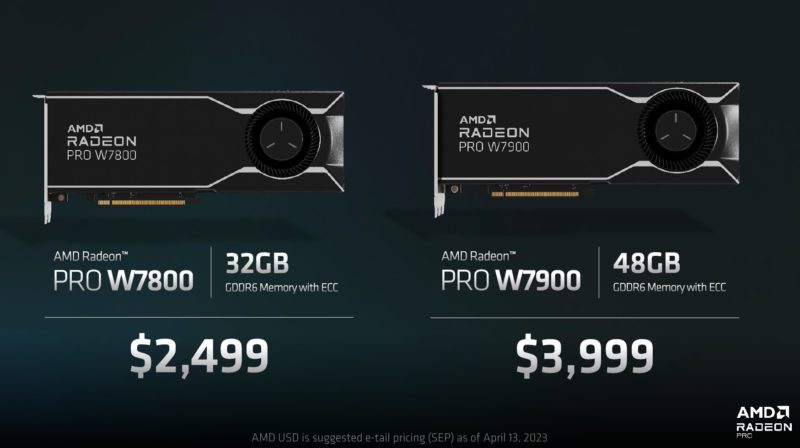
The RDNA3 GPU uses a chiplet architecture to help scale the design. It also has AMD’s new features.
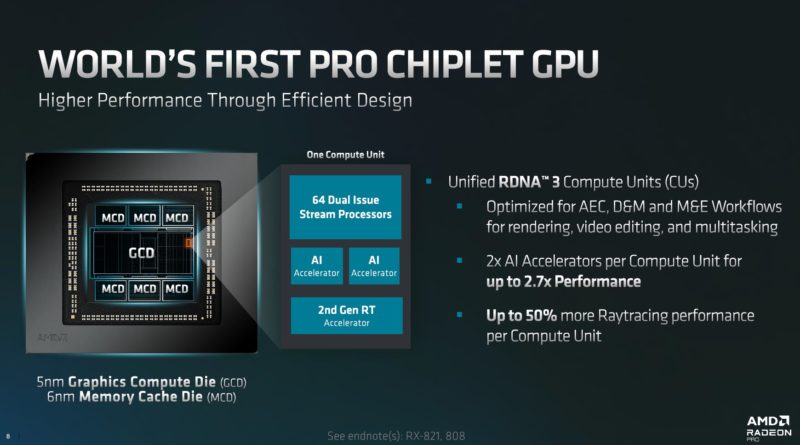
One of the big features is the new dual media engine for encode/decode. This includes AV1 encode and up to 8k60 support.
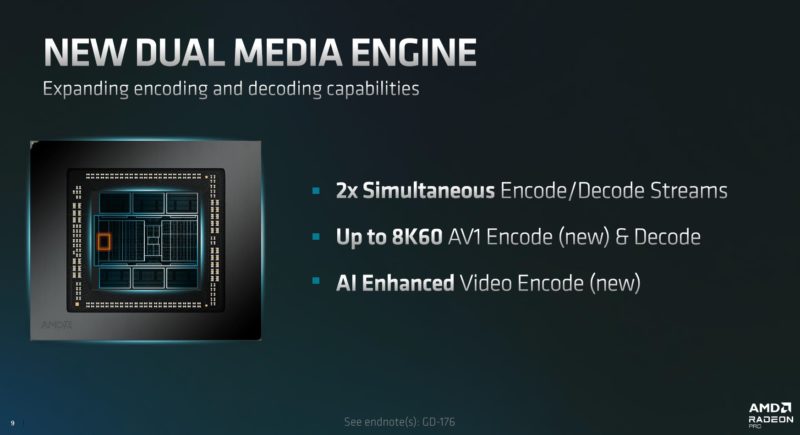
Then comes the really interesting one. AMD has DisplayPort 2.1 while NVIDIA is still at DP 1.4. In theory, the professional graphics community might be an earlier adopter of the new standard, so this could end up being important.
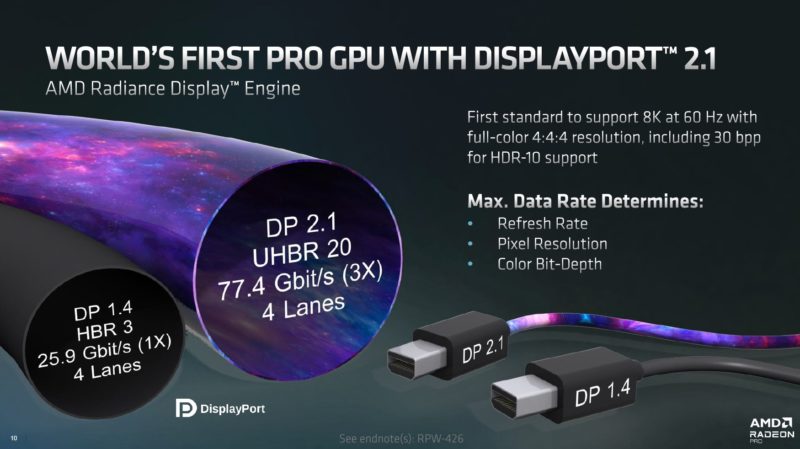
That is with next-generation displays. This is one of those features where if you plan to use a high-end 8K display, that can support the output modes of DisplayPort 2.1, you will find this to be very important. If you do not use one of those displays, this is not going to be a big deal.
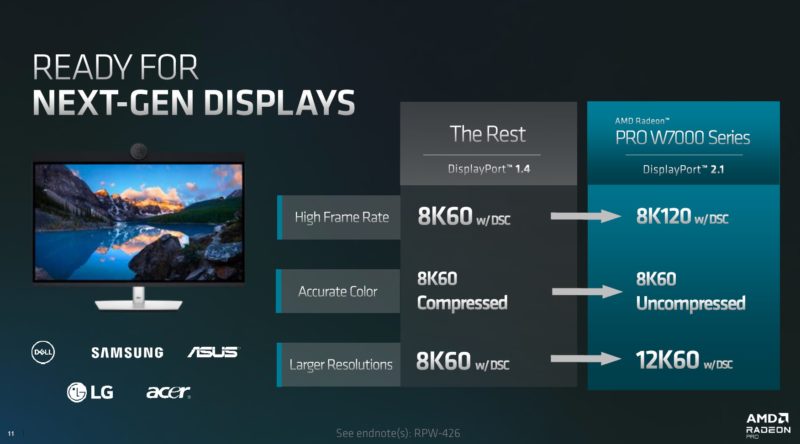
As for the actual cards, the AMD Radeon Pro W7900 is a 48GB ECC 384-bit GDDR6 card with 96CUs, and a 295W TDP.
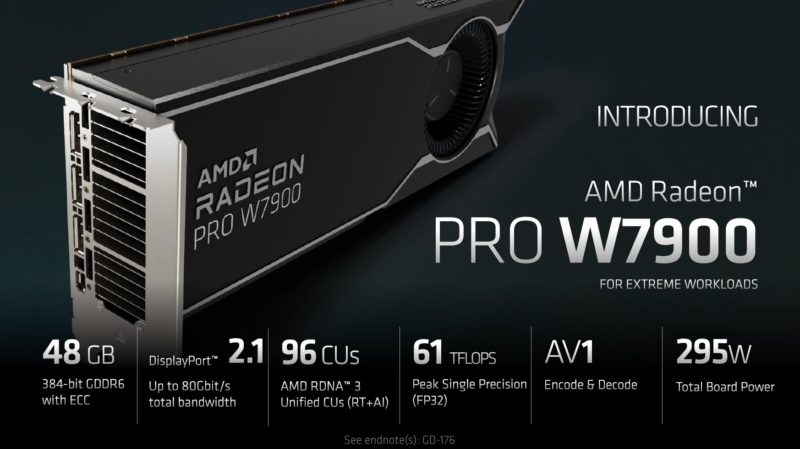
The AMD Radeon Pro W7800 is a 32GB ECC 256-bit GDDR6 card with 70CUs, and a 260W TDP.
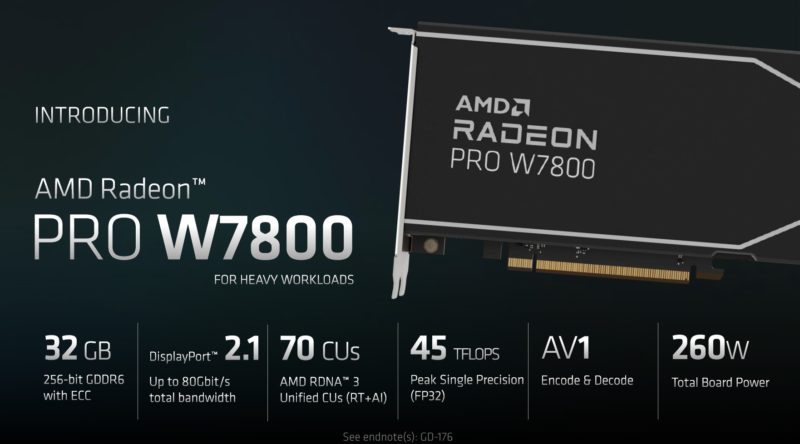
On the generational comparison to the previous to-end Radeon Pro W6800, the highlighted areas are more memory, DisplayPort 2.1, and then SPECviewperf. The big 3x number is DP 2.1 to DP 1.4 bandwidth.
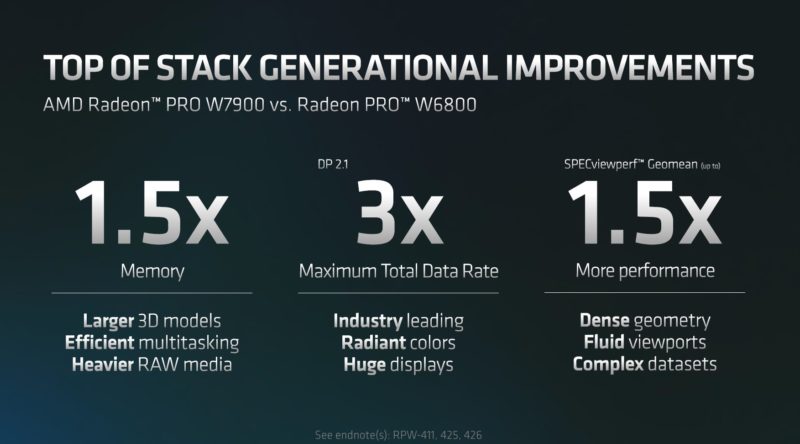
On the competitive side, here is where AMD leans into the price/ performance comparison. The 295W v. 300W power is probably less exciting to folks, and again the DisplayPort generation is mentioned. Still, we can see that AMD is focusing on undercutting with price. It would have been great to see AMD do something like have a 64GB W7900 card and differentiate itself that way as well. While AMD is adding AI acceleration to this generation, NVIDIA’s GPUs are riding a wave of interest in practical uses of AI.
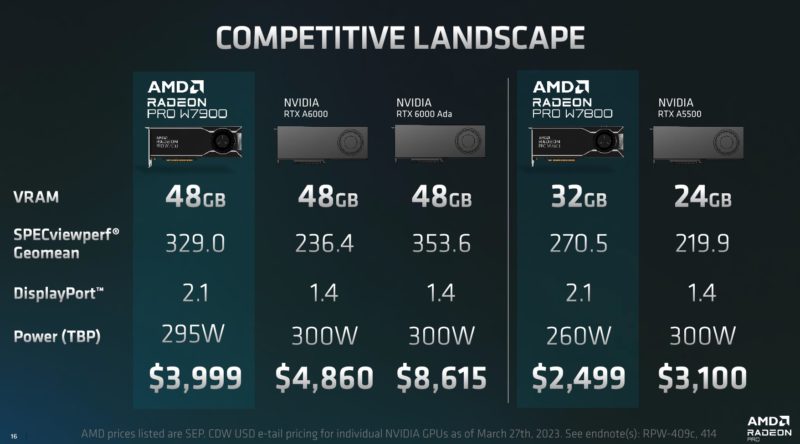
The other interesting part is the SPECviewperf 2020 results. We have a BOXX APEXX S3 Overview An Intel Core i9 and NVIDIA RTX 6000 Ada Workstation and here are the results.
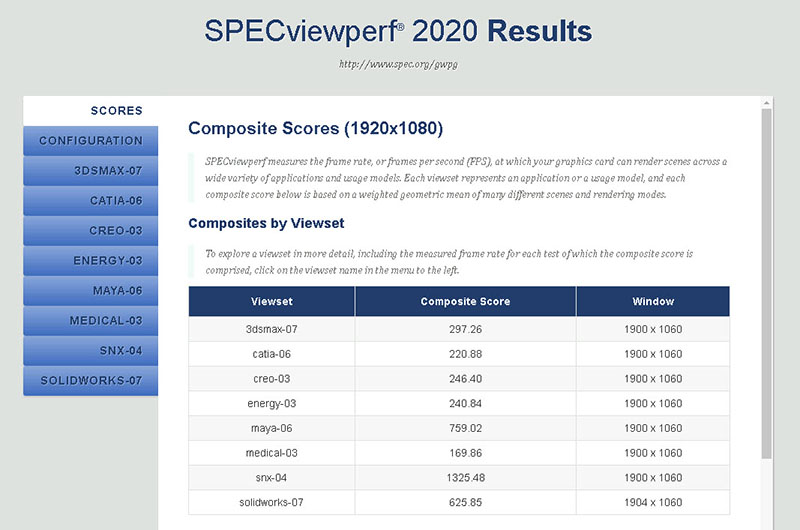
The RTX 6000 is an expensive card that you may have seen on set in some recent STH YouTube videos, but it is the top-end of the market right now.
Final Words
AMD’s strategy of undercutting the pricing of NVIDIA’s professional RTX GPU line makes sense. Hopefully, we will see these new GPUs in the market soon. AMD says the cards will be available in “Q2 2023” so it sounds like they are coming.
For those who want more in this segment, William’s NVIDIA RTX 6000 Ada review will be online in the next 10 days or so.

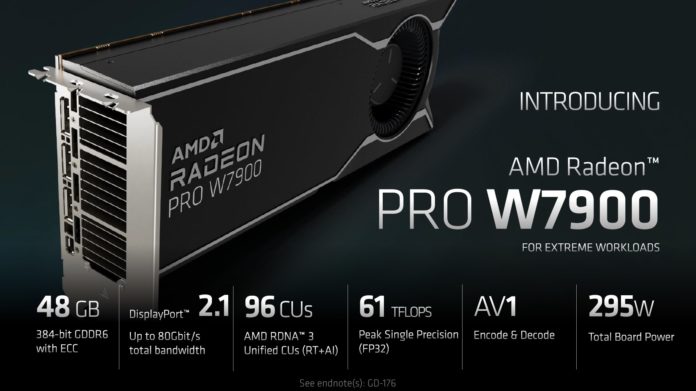



Lets hope this nudges nVidia to cut the price of RTX6Kada down to where it should be in the $4000-$4500 range. They did a similar cut with the Turing series RTX6000
This is great, but AMD needs to focus on the software side if they’re going to make a dent in ML. All this seemingly capable, reasonably-priced hardware is wonderful, but people still have to buy Nvidia because they own the software story.
I get that building a software ecosystem requires enormous amounts of cash and plenty of time. Nvidia has 10 years of shoveling money into cuDNN and building out CUDA support. But I wish AMD was in a position to do the same, so there could be reasonable competition out there.
Intel is clearly very hungry to build out their software ecosystem and doing well, but their hardware is just too immature and scarce at this moment in time. Here’s to hoping AMD can be a serious contender in the ML gold rush sooner rather than later.